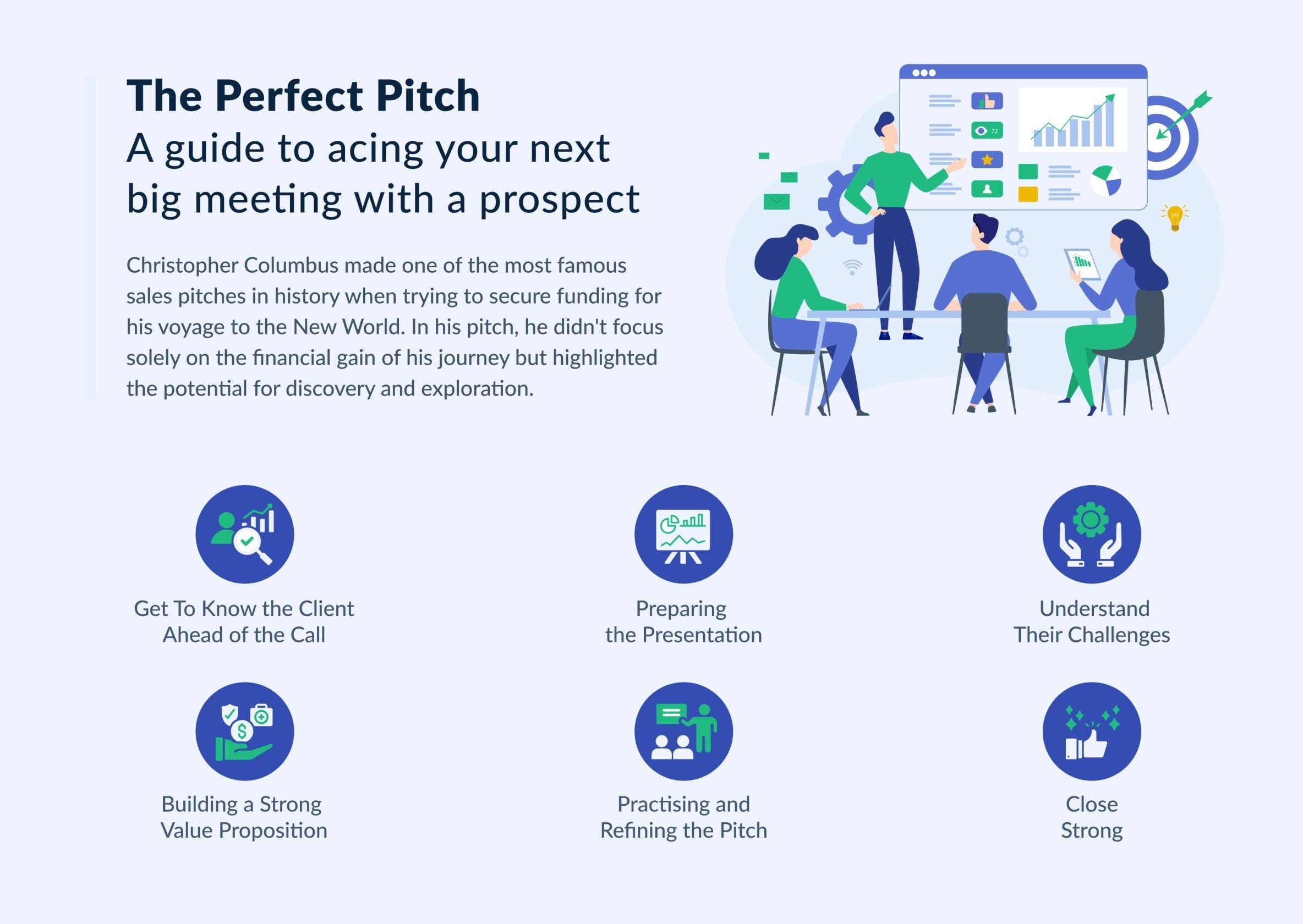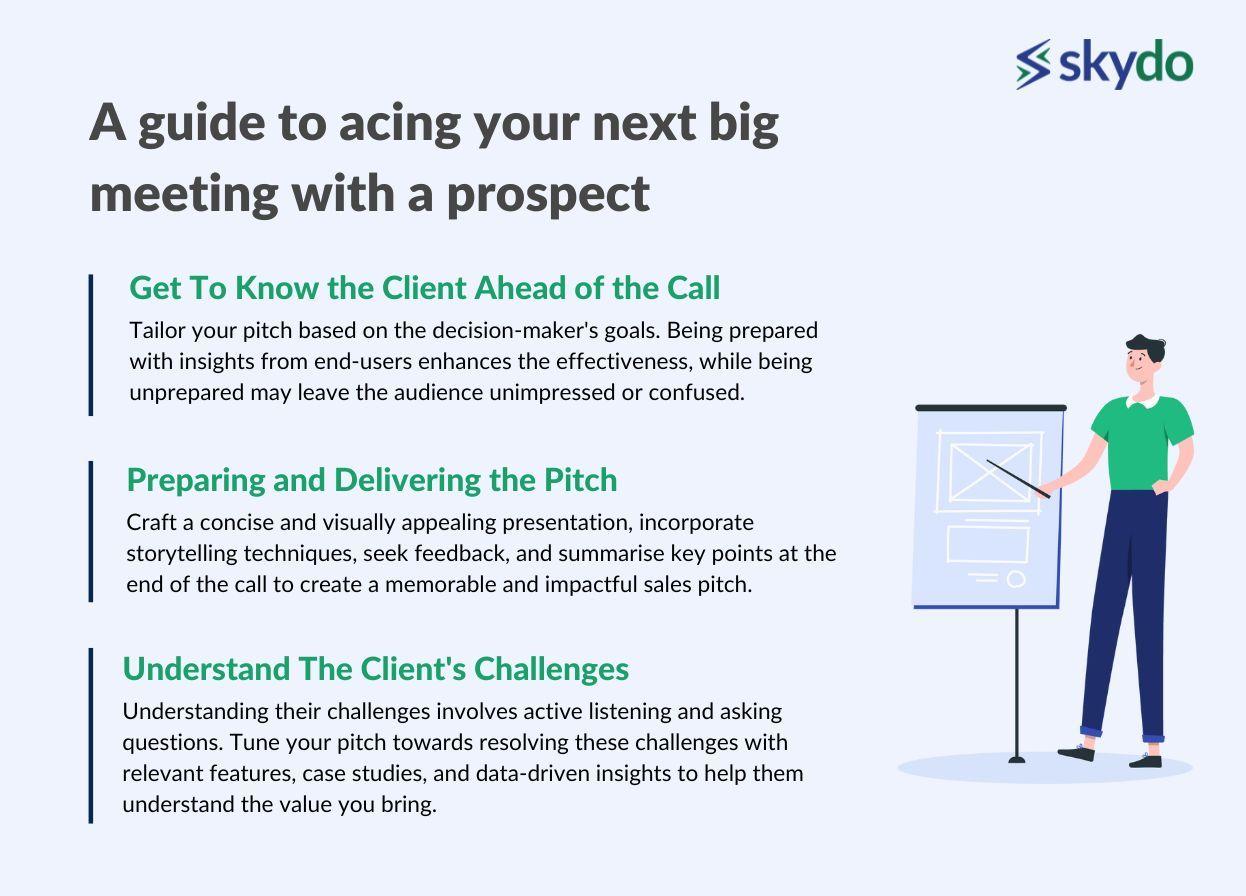The Perfect Pitch: A Guide to Acing Your Next Big Meeting With a Prospect



Ah, the thrill of entrepreneurship! A world where today's startups could be tomorrow's tech behemoths; a realm brimming with stories of hard work, ingenuity, and a fantastic pitch, just like the one with Ola.
Bhavish Aggarwal and Ankit Bhati, Ola's founders, saw beyond the common frustrations of everyday commuters. They didn't just identify a problem — the dire lack of dependable and affordable transportation — they envisioned a solution that would radically transform urban mobility in India.
In their pitch, they painted a picture of a platform that went beyond conventional cabs to cater to the diverse needs of Indian consumers. It wasn't just about going from point A to point B, but about the journey itself, one that was seamless, convenient, and truly Indian.
One such investor, captivated by their compelling pitch, recounted an incident at Delhi airport, a bustling hub notorious for its taxi shortages. Despite his initial skepticism about the gravity of the problem highlighted by the founders, he was confronted with the reality when he found himself stranded, mirroring the scenario they described.
That day, the investor became a believer. And it was this belief, multiplied across multiple investors, that paved the way for Ola's meteoric rise in the Indian market.
A compelling pitch is a powerful tool that connects a great idea with the resources it needs to come to life. Let’s go through the steps of crafting a pitch for your next big meeting that could be the launchpad for your success story.
#1. Get To ‘Know’ Ahead of the Call
Crafting a compelling pitch for a product or service necessitates a deep understanding of the decision-makers and their objectives. Those salespersons who overlook performing their due diligence often deliver monologues that feel flat, generic, and disconnected from the audience's reality.
Consider, for example, that you're selling a project management tool intended for a mid-sized software company. The key players here would likely encompass the CIO, the IT director, and the project manager.
Senior BDR at BrowserStack, Parth Bhatia, provides a valuable insight into his strategy: “If I am calling the VP of IT of a company, I'll spend the previous day/hour talking to IT Team Leads or Software Engineers (basically end-users). This gives me context when calling someone like the VP of IT or Senior IT Director.” His strategy demonstrates the importance of background work and understanding the end user's perspective in making the pitch more relatable and effective.
Similarly, you can contact the project manager via Linkedin and ask questions to gain further insights. Some potential questions include:
- What are your most significant pain points when it comes to managing projects?
- How do you currently keep track of project timelines and deadlines?
- What features are most important to you in a project management tool?
Based on the answers you receive, you can tailor your pitch to address the specific needs of the decision-makers.
For example, if the project manager mentions that they struggle to keep track of deadlines, you can highlight how your tool provides visual timelines and reminders to achieve deadlines. If the IT director is concerned about data security, you can emphasise the security features of your product.
#2. Prepare and Deliver the Right Pitch
A good presentation in a sales call is like a well-crafted dish in a restaurant. It's not just about the taste but also the presentation that makes it appealing and memorable.
“I was once on a pitch by SafetyWing, an insurance provider, where they pitched to a group of us within the company - which is not an easy task. They came prepared with some fun slides to break the ice, of which one question was, 'Who likes pineapple on pizza?' To me, it gave me the feeling that their team is super approachable, which works in their favour. “ — Hruthika Charan, Founder, The Product Pod
When your audience sees that you have considered their problems and presented solutions relatably, it leaves a lasting impression. Here are some tips to help you create an impactful presentation.
- Keep your presentation concise and focused. Stick to the key points and avoid unnecessary information that may distract the client from your message.
- Use visual aids such as infographics, charts, and graphs to help convey your message. Visuals can often be more memorable than words alone.
 Fig: A simple representation of the top priority list for a company's treasury departmen,
Source: HighRadius
Fig: A simple representation of the top priority list for a company's treasury departmen,
Source: HighRadius- Use storytelling techniques to help illustrate the benefits of your product/service and make your presentation more engaging and memorable.
Rehearsing the pitch multiple times before the presentation can help build confidence and polish the delivery. But practicing alone may not be enough to refine and improve the pitch. Seeking feedback from others is equally important.
Another way to improve the pitch is recording it; watching it back can help identify areas that need improvement. It could be the tone of voice, body language, or how the information is presented.
The end of a discovery call is critical to leave a lasting impression on the client. Summarise the key points of the call and reiterate your value proposition to reinforce your message and ensure the client understands the value you can offer.
#3. Ask the right questions
Understanding a client's challenges is like walking in their shoes. You must gather all the information, actively listen to the client, and ask the right questions to understand their needs and pain points.
“Research the client, audit their publicly available assets, and be ready with a list of questions. Clear your head: You're going there to help them, not sell your services“ — Deep Shah, Co-founder of The Wise Idiot
Here are some tips on learning about your client’s challenges.
- Start with open-ended questions: Asking open-ended questions encourages clients to share their thoughts and feelings about their challenges. For example, you might ask, "What are the biggest challenges you're facing in your business right now?"
- Listen actively: When the client is talking, listen actively. Take notes, ask follow-up questions, and show genuine interest in what they're saying.
- Dig deeper: Ask follow-up questions to get to the root of the problem. For example, if the client mentions that they're struggling with employee productivity, you might ask, "Can you tell me more about what's causing the productivity issues?"
Once you understand the client's challenges, you can use this information to craft a compelling pitch that addresses their needs.
“The goal of a discovery call is not to forcefully fit your product but to (genuinely) take an interest in problems prospects face and understand if those problems actually matter to them.” — Chintan Bavishi, Growth Associate at Outplay
Some examples of the way to achieve this include
- Highlight how your product solves its specific challenges: If the client struggles with productivity, highlight how your product includes features that streamline workflows and improve efficiency.
- Use case studies: Sharing examples of how your product has helped other clients overcome similar challenges can be a powerful way to demonstrate its value.
- Provide data-driven insights: If you have data that supports the effectiveness of your product in addressing the client's challenges, share it. For instance, you might share a company’s case study in the same industry to increase its conversion rates by 30% using your product.

Bonus Tips
It is recommended to have referrals, testimonials, and real case studies prepared for every project that is being pitched. It works like the secret Ingredients for your client meeting.
If the prospect requests to see past work, having an impactful case study with a client testimonial willing to discuss your services can provide additional credibility. Such evidence can serve as a tangible demonstration of the quality of work provided to previous clients and help establish trust and a positive reputation.
The perfect pitch is not just about selling your product or service; it's about building a relationship with your client and showing them how you can help them achieve their goals.
The next time you have a big client prospect meeting, use these tips to knock their socks off and win their business.







